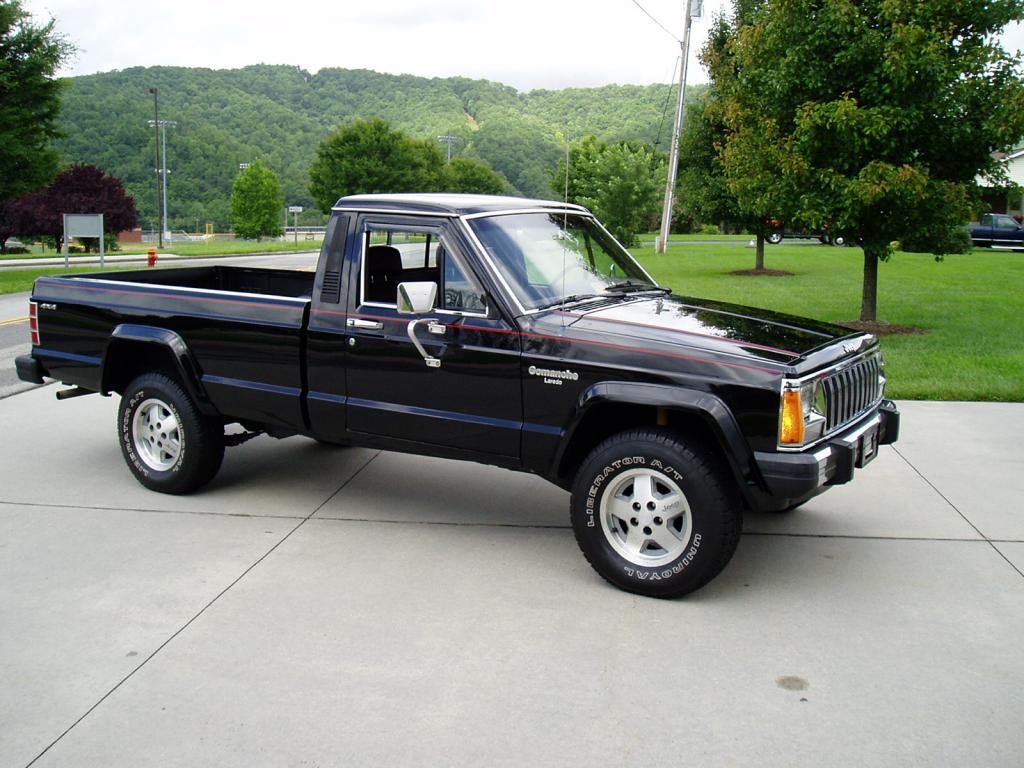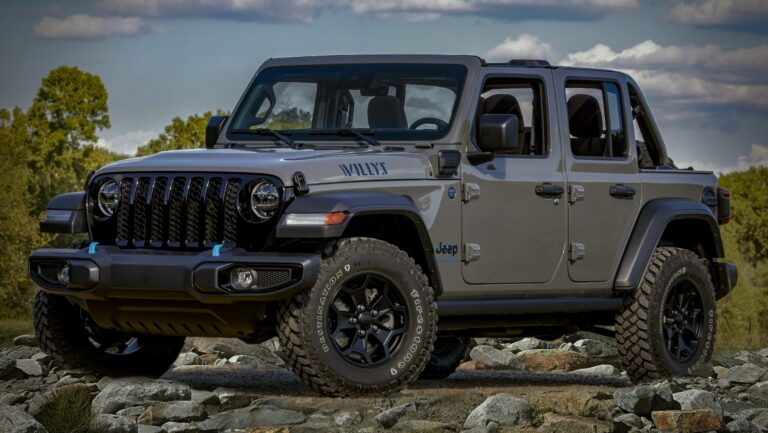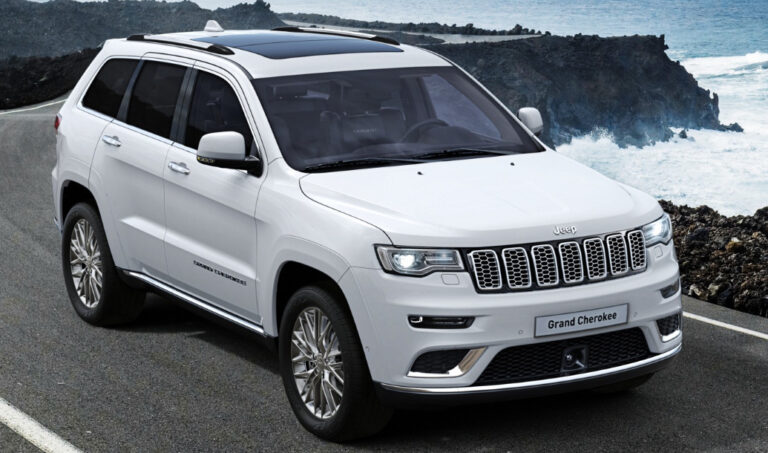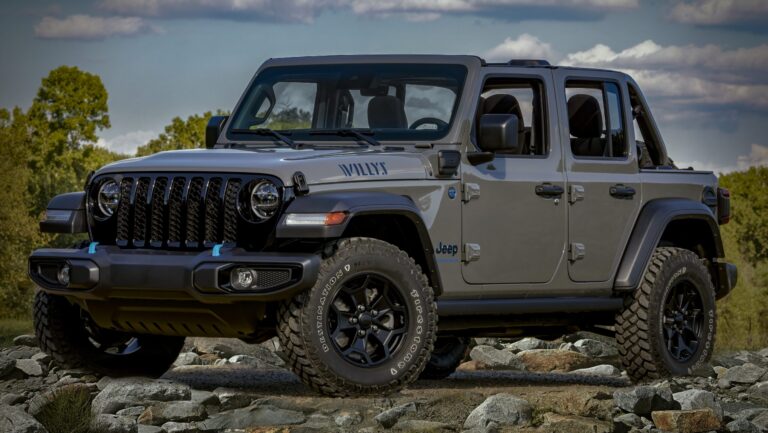Jeep Comanche For Sale Florida: Your Ultimate Guide to Finding and Owning a Classic MJ
Jeep Comanche For Sale Florida: Your Ultimate Guide to Finding and Owning a Classic MJ jeeps.truckstrend.com
The Jeep Comanche, an icon of compact truck utility and rugged Jeep heritage, holds a special place in the hearts of automotive enthusiasts. Produced for a relatively short span from 1986 to 1992, this unique pickup, based on the highly successful XJ Cherokee platform, offered a compelling blend of SUV comfort and pickup truck versatility. For many, it represents the last true "Jeep truck" before the modern Gladiator’s arrival decades later. If you’re on the hunt for a piece of this distinctive history, Florida presents an exceptionally promising landscape for finding a well-preserved Jeep Comanche for sale.
This comprehensive guide is designed to navigate the nuances of acquiring a Jeep Comanche in the Sunshine State. We’ll delve into why Florida is a prime hunting ground, what to meticulously inspect, how to estimate pricing, and provide actionable insights to ensure your journey to Comanche ownership is as smooth and rewarding as the ride itself.
Jeep Comanche For Sale Florida: Your Ultimate Guide to Finding and Owning a Classic MJ
The Enduring Appeal of the Jeep Comanche
The Jeep Comanche (internal code MJ) emerged during an era when compact pickups were evolving. Chrysler, having acquired AMC/Jeep, capitalized on the popular XJ Cherokee’s unibody architecture, extending it with a frame-like rear section to support a pickup bed. This "Uniframe" design offered a lighter, more car-like ride than traditional body-on-frame trucks, while retaining the legendary off-road prowess Jeep was known for.
Key features that cemented the Comanche’s appeal include:
- Robust Drivetrain Options: Primarily powered by the bulletproof 4.0L inline-six engine (both Renix and High Output versions), offering ample torque and legendary reliability. Earlier models also featured 2.5L I4 and 2.8L V6 options.
- Legendary Off-Road Capability: Sharing its DNA with the XJ Cherokee meant solid axles (Dana 30 front, Dana 35 or the rarer, desirable Dana 44 rear), capable transfer cases (NP231 Command-Trac, NP207 Selec-Trac), and robust suspension, making it a formidable off-road machine.
- Practicality and Versatility: Available in 6-foot (short bed) and 7-foot (long bed) configurations, the Comanche was a practical workhorse, equally at home hauling gear as it was tackling trails.
- Unique Styling: Its distinctive silhouette, blending the XJ’s iconic front end with a compact pickup bed, gives it an undeniable retro charm that stands out from modern trucks.
- Modifiability: Like its XJ sibling, the Comanche benefits from a vast aftermarket parts industry, allowing for easy customization, lifts, and performance upgrades.

Its relative rarity compared to the XJ Cherokee, combined with its blend of utility and classic Jeep ruggedness, has elevated the Comanche to cult status, making well-preserved examples highly sought after by collectors and enthusiasts alike.
Why Florida is Prime Territory for Comanche Hunting
When searching for a vintage vehicle, the geographic location plays a critical role in its condition, and Florida offers distinct advantages for finding a Jeep Comanche for sale:

- Rust Mitigation: This is perhaps the most significant benefit. Unlike states in the "Rust Belt" (Northeast, Midwest) where road salt and harsh winters rapidly corrode vehicle frames and bodies, Florida’s warm, often dry climate minimizes rust formation. Vehicles that have spent their entire lives in Florida are far more likely to have solid frames, floorboards, rocker panels, and bed mounts – areas notoriously susceptible to corrosion on older trucks. While coastal areas can introduce salt air, inland Florida vehicles often present remarkably well.
- Enthusiast Community: Florida boasts a vibrant and active Jeep and off-road community. This means a higher likelihood of finding Comanches that have been cared for by enthusiasts, regularly maintained, and potentially modified with quality parts. Local Jeep clubs and events can also be excellent sources for leads.
- Availability: Due to the favorable climate, a higher percentage of older vehicles, including Comanches, have simply survived in better condition in Florida. This increases your chances of finding more options and a wider range of conditions and prices.
- Local Driving Conditions: Florida’s generally flat terrain means less strain on the drivetrain compared to mountainous regions. While off-roading is popular, the nature of many trails might be less extreme than rock crawling, potentially leading to less overall mechanical abuse on some examples.

These factors combine to make Florida an ideal place to begin your search for a rust-free, mechanically sound Jeep Comanche.
Navigating the Market: Where to Find a Comanche in Florida
Finding your perfect Jeep Comanche in Florida requires a multi-pronged approach, leveraging both online resources and local connections:
- Online Marketplaces (Local Focus):
- Craigslist: Still a powerhouse for private party sales. Search multiple Florida metro areas (Miami, Orlando, Tampa, Jacksonville, Sarasota, etc.) as Comanches are often listed regionally. Use keywords like "Jeep Comanche," "MJ," "Comanche truck."
- Facebook Marketplace: Increasingly popular for local sales. Join dedicated "Jeep Comanche For Sale" or "Jeep XJ/MJ Florida" groups, as enthusiasts often list vehicles there first.
- eBay Motors: Good for a broader search, though you might encounter listings from outside Florida. Filter by location.
- AutoTrader Classics / Hemmings Motor News: These platforms cater to classic and collector vehicles, so you might find higher-end, restored examples here.
- Specialized Forums & Websites:
- ComancheClub.com: The definitive online community for Jeep Comanche owners and enthusiasts. Their classifieds section is a must-check, often featuring well-documented vehicles from knowledgeable sellers.
- NAXJA (North American XJ Association): While primarily focused on the Cherokee, given the shared platform, many Comanche owners are also members. Check their regional forums for Florida.
- Local Dealerships & Classic Car Dealers: While rare, some smaller, independent classic car dealerships in Florida might occasionally have a pristine Comanche in their inventory. These will likely be higher priced but potentially fully vetted.
- Word-of-Mouth & Local Events: Attend local Jeep jamborees, off-road expos, and classic car shows in Florida. Network with owners and enthusiasts. You never know when someone is looking to sell or knows someone who is. Local mechanics specializing in Jeeps or 4x4s can also be excellent sources.
What to Look For: A Buyer’s Checklist for Florida Comanches
Even in Florida, no vintage vehicle is perfect. A thorough inspection is paramount. Here’s a detailed checklist:
1. Rust (Despite Florida’s Advantage)
While less prevalent, rust can still occur, especially near coastal areas due to salt air, or if the vehicle was previously owned outside Florida.
- Frame Rails: Critically inspect the uniframe structure, especially where the unibody transitions to the frame rails for the bed. Look for bubbling, flaking, or previous repairs.
- Floorboards & Rocker Panels: Check inside and out. Lift carpets if possible.
- Bed: Inspect the bed floor, bed supports, and the area around the wheel wells.
- Door Sills & Lower Door Edges: Common moisture traps.
- Windshield Frame & Cowl: Water leaks here can lead to interior rust and electrical issues.
- Underbody Components: Axle tubes, suspension mounting points, fuel tank straps.
2. Mechanical Condition
- Engine (4.0L I6 is King):
- Renix (1987-1990): Known for robust bottom ends. Check for oil leaks (rear main seal is common), proper idle, and smooth acceleration. Specific Renix issues include failing Crankshaft Position Sensors (CPS) and Throttle Position Sensors (TPS).
- High Output (HO) (1991-1992): More power and slightly better fuel injection. Common issue is a cracked exhaust manifold. Check for proper oil pressure, coolant leaks, and any unusual noises (knocking, ticking).
- 2.5L I4 (Earlier models): Less power but reliable. Check similar points.
- 2.8L V6 (Rare, Avoid if Possible): GM-sourced, generally considered underpowered and less reliable.
- Transmission:
- AW4 Automatic: Very robust. Check for smooth, timely shifts, no slipping, and proper fluid level/color.
- AX-4/AX-5/AX-15 Manual: Check clutch engagement point, smooth gear changes, no grinding, and proper shifter feel.
- Transfer Case (NP231 most common): Ensure it engages smoothly into 2WD, 4-High, and 4-Low without excessive clunking or grinding. Check for leaks.
- Axles (Dana 30 front, Dana 35 rear, Dana 44 rear – rare/desirable): Listen for humming or whining noises during driving. Check for differential fluid leaks.
- Suspension & Steering:
- Bushings: Worn control arm bushings, leaf spring bushings.
- Ball Joints & Tie Rod Ends: Check for play.
- Steering Box: Excessive play in the steering wheel.
- Shocks: Leaking or worn.
- Brakes: Test pedal feel (firm), check for pulling, pulsating, or grinding. Inspect brake lines for corrosion.
- Electrical System: Test all lights, gauges, power windows, HVAC, radio. Older Jeeps can have finicky electrical systems.
3. Interior & Exterior
- Interior: Condition of seats (tears, foam collapse), dashboard (cracks), headliner (sagging), carpet. Look for signs of water intrusion (mold, mildew, staining).
- Exterior: Inspect paint condition (fading, peeling, rust bubbles under paint), body panel alignment (sign of accident history), condition of the bed liner (if present), and any aftermarket modifications (lifts, bumpers, etc.) – ensure they are professionally installed.
4. Documentation
- Clean Absolutely essential. Verify the VIN on the title matches the vehicle.
- Service Records: A huge bonus, indicating regular maintenance.
- Modification History: If modified, understand what was done and by whom.
Pricing Your Florida Comanche: Factors and Expectations
The price of a Jeep Comanche for sale in Florida can vary wildly, from a few thousand dollars for a project to well over $20,000 for a pristine, low-mileage, or professionally restored example. Several factors influence the market value:
- Condition: This is the primary driver. A rust-free, mechanically sound, and well-maintained Comanche will command a significant premium.
- Engine & Transmission: The 4.0L High Output (HO) engine paired with either the AW4 automatic or AX-15 manual transmission is the most desirable and fetches higher prices.
- Mileage: While lower mileage often correlates with higher prices, condition and maintenance history are more critical for older vehicles. A high-mileage, well-maintained Comanche is often better than a low-mileage neglected one.
- Bed Length: Preference varies, but both short bed (SB) and long bed (LB) versions are popular. Short beds are often preferred for off-roading, long beds for utility.
- Trim Level: Eliminator (sporty, higher trim), Pioneer, Chief, Sportruck, Custom. Eliminator models typically fetch the highest prices due to their features and rarity.
- Modifications: Tasteful, well-executed modifications (quality lift kits, upgraded tires, bumpers, winches) can add value. Poorly done or extreme modifications can detract.
- Rarity & Desirability: Rarer configurations (e.g., Dana 44 rear axle from the factory) will command higher prices among enthusiasts.
Sample Price Table for Jeep Comanche For Sale Florida (Estimates Only):
| Condition | Engine Type | Transmission | Bed Length | Estimated Price Range (USD) | Notes |
|---|---|---|---|---|---|
| Project | 2.5L I4/4.0L | Any | Any | $2,000 – $5,000 | Significant mechanical/body work needed, rust issues, non-runner. |
| Fair | 4.0L (Renix) | Auto/Manual | Any | $5,000 – $9,000 | Drivable, minor rust, needs TLC, some issues. |
| Good | 4.0L (HO) | Auto/Manual | Short/Long | $9,000 – $15,000 | Solid runner, minimal rust, average wear, minor cosmetic flaws. |
| Excellent | 4.0L (HO) | Auto/Manual | Short/Long | $15,000 – $25,000+ | Very clean, minimal to no rust, well-maintained, potentially low miles. |
| Show/Restored | 4.0L (HO) | Auto/Manual | Short/Long | $25,000 – $40,000+ | Concours quality, professional restoration, rare trim/options. |
Note: These are rough estimates for Florida-based vehicles, assuming better-than-average rust conditions. Actual prices depend heavily on specific vehicle history, seller motivation, and current market demand.
The Buying Process: Tips for a Smooth Transaction
Once you’ve identified a potential Comanche, follow these steps:
- Initial Contact: Ask detailed questions about the vehicle’s history, maintenance, any known issues, and why the seller is parting with it. Request more photos, especially of specific areas like the undercarriage.
- In-Person Inspection: Never buy sight unseen. Arrange to see the vehicle in daylight. Bring your checklist.
- Test Drive:
- Start cold. Listen for abnormal noises.
- Test all gears (including 4WD High and Low).
- Drive at various speeds.
- Test brakes, steering, turn signals, wipers, HVAC, and all dashboard lights/gauges.
- Listen for suspension clunks over bumps.
- Pre-Purchase Inspection (PPI): This is critical for any older vehicle. Find a trusted mechanic in Florida who specializes in Jeeps or classic 4x4s. They can identify issues you might miss and provide an unbiased assessment of the vehicle’s true condition.
- Negotiation: Be prepared to negotiate, but be realistic. A well-maintained, rust-free Comanche in Florida is a valuable commodity. Use any identified issues from your inspection or PPI as leverage.
- Title Transfer: Ensure the seller has a clear, valid title in their name. In Florida, you’ll need to transfer the title and register the vehicle at a local DMV or tax collector’s office. Be aware of sales tax requirements.
- Insurance: Explore classic car insurance options, as they often provide better coverage and lower premiums for vehicles of this age and type.
Potential Challenges and Solutions
While buying a Comanche in Florida offers advantages, some challenges remain:
- Finding a Truly Pristine Example: While less rusty, "perfect" Comanches are still rare. Be patient and willing to travel within Florida.
- Parts Availability: While many mechanical parts are shared with the ubiquitous XJ Cherokee (making them plentiful), unique body panels (bed, cab back) can be harder to find and more expensive. Solution: Join Comanche-specific forums; aftermarket support is strong for common upgrades.
- "Jeep Tax": The popularity of the Jeep brand often inflates prices. Solution: Be firm on your budget and prioritize condition over perceived rarity.
- Hidden Problems: Old vehicles have quirks. Solution: A thorough PPI is your best defense against unexpected issues.
- Transportation: If you find your dream Comanche far from your home in Florida, factor in the cost and logistics of transporting it.
Concluding Summary
The Jeep Comanche represents a unique chapter in automotive history – a rugged, versatile, and distinctively styled compact pickup that effortlessly blends classic Jeep capability with everyday utility. For those seeking to own a piece of this legacy, Florida offers an unparalleled advantage, significantly increasing your chances of finding a rust-free and well-preserved example.
By understanding the Comanche’s enduring appeal, leveraging Florida’s climate benefits, meticulously inspecting potential candidates, and navigating the buying process with diligence, you can successfully acquire a vehicle that promises not just a mode of transport, but a rewarding experience. Owning a Jeep Comanche is more than just driving a truck; it’s about embracing a lifestyle, joining a passionate community, and enjoying the undeniable charm of a true American classic. Your adventure in a Jeep Comanche, found right here in the Sunshine State, awaits!
Frequently Asked Questions (FAQ) about Jeep Comanche For Sale Florida
Q1: Is the Jeep Comanche a reliable vehicle?
A1: Yes, particularly models equipped with the 4.0L inline-six engine (especially the High Output version). The 4.0L is renowned for its durability and longevity, often reaching 200,000-300,000 miles with proper maintenance. However, as with any vehicle 30+ years old, regular maintenance and addressing wear-and-tear items are crucial for reliability.
Q2: Which engine is best for the Jeep Comanche?
A2: The 4.0L inline-six (I6) is by far the most desirable engine. It offers the best balance of power, torque, and legendary reliability. Within the 4.0L range, the 1991-1992 High Output (HO) version is generally preferred for its slightly higher horsepower and improved fuel injection system compared to the earlier Renix system (1987-1990). The 2.5L I4 is adequate but less powerful, and the rare 2.8L V6 is generally advised to avoid.
Q3: Are parts hard to find for a Jeep Comanche?
A3: For most mechanical components (engine, transmission, transfer case, axles, suspension), parts are relatively easy to find as they are largely shared with the highly popular and abundant Jeep XJ Cherokee. Aftermarket support for upgrades (lift kits, bumpers, etc.) is also excellent. However, unique body panels specific to the Comanche (like the bed, cab back, and some trim pieces) can be harder to source and may require searching specialized forums or salvage yards.
Q4: How much should I expect to pay for a rust-free Comanche in Florida?
A4: A truly rust-free, well-maintained Jeep Comanche with the 4.0L engine in good to excellent condition in Florida will command a premium. Expect to pay anywhere from $10,000 to $25,000 or more, depending on mileage, trim level (Eliminator models are pricier), and overall originality/condition. Project vehicles or those needing significant work can be found for $2,000-$7,000.
Q5: Can a Jeep Comanche be a daily driver?
A5: Absolutely, if it’s in good mechanical condition and well-maintained. Many Comanche owners use them as daily drivers. Their compact size, reasonable fuel economy (for an older truck), and comfortable ride (compared to traditional body-on-frame trucks) make them practical for everyday use. However, be prepared for the realities of owning a vintage vehicle, which may include more frequent maintenance than a modern car.
Q6: What’s the main difference between the Renix and High Output (HO) 4.0L engines?
A6: The Renix 4.0L (1987-1990) uses a unique engine management system. The HO 4.0L (1991-1992) features a different cylinder head design, intake manifold, and a more conventional Chrysler/Bosch engine management system. The HO generally offers more horsepower (190hp vs. 177hp for Renix) and is often considered slightly more straightforward to diagnose and service due to its commonality with later XJs.
Q7: Is a short bed or long bed Comanche more desirable?
A7: This is largely a matter of personal preference and intended use.
- Short Bed (SB – 6-foot): Often preferred by off-road enthusiasts due to a shorter wheelbase, which improves break-over angle and maneuverability on trails.
- Long Bed (LB – 7-foot): Offers more cargo capacity, making it more practical for hauling larger items or for those who prioritize utility.
Both configurations have their dedicated fan bases, and desirability often comes down to the buyer’s specific needs.





